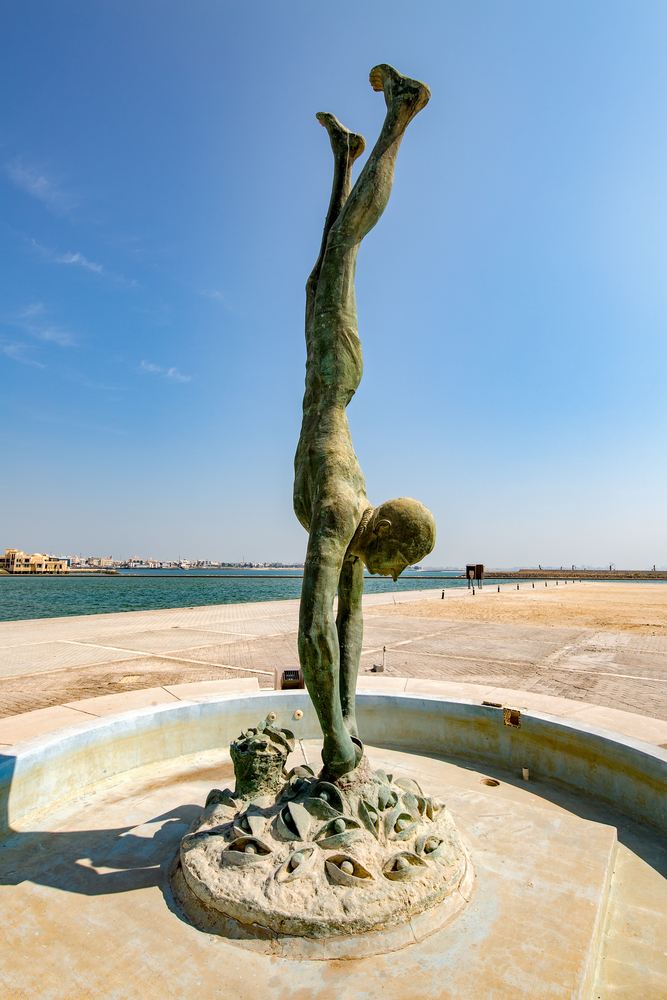Bahrain has revived its age-old pearl industry as it looks to other sources of revenue to diversify its oil economy.
The Bahrain Institute for Pearls and Gemstones recently announced that it has examined over 10 million pearls from all over the world since it was established in 2017. It said its commercial laboratory has become a global authority on the verification of these stones.
The institute is owned by the kingdom’s sovereign wealth fund Mumtalakat, and run by CEO Noora Jamsheer, who noted the world is seeing growing demand for these gems.
She told Arab News: “The reason we’re seeing an increase in natural pearls is due to the growing global demand for items with rarity value. And that rarity is being maintained by the government of Bahrain.”
Jamsheer noted that there is greater demand for natural pearls as opposed to the cultured variety.
Cultured pearls are artificially produced by inserting a tiny piece of mother-of-pearl into a live oyster shell, but Jamsheer said the result produces an almost “too perfect” stone that is only 20 percent natural, with the core made from inferior material.
But the beauty of 100 percent natural pearls are their subtle imperfections and incomparable luster, which have been prized for thousands of years, she said.
Pearls have a storied modern history. A high-water mark came around 1915, when an especially fine pearl was found to be worth four times a diamond of the same weight.
The following year the famous French jeweler Cartier bought its New York showroom by exchanging two strings of pearls for a Fifth Avenue building — a deal worth some $1.5 million at the time.
But only a few years later those same strings of pearls were valued at only $140,000, as the natural pearl market declined due to a combination of factors including the Great Depression and the demise of the imperial families of Europe and the maharajas of India, who prized the stone.
As demand for natural pearls fell, the artificial cultivation of pearls grew more sophisticated and came to dominate the market.
Meanwhile, Bahrain, which has always had an established pearl industry, increasingly became an oil-based economy after crude was discovered in the kingdom in the 1930s. Severe restrictions were imposed on the extraction of pearls, which kept a lid on the sector for decades.
Jamsheer pointed out that the kingdom has a wide-ranging plan to boost the pearl business.
This includes using the institute to regulate new pearls by developing its gem laboratory, and protecting the country’s offshore pearl beds, which are larger than the whole of Bahrain.
The body also works to preserve the heritage of the industry and strengthen the kingdom’s position as a global center for the trade in natural pearls.

The Pearl Diver monument in the Bahrain National Museum (Shutterstock)
Jamsheer pointed out that pearls continue to be sourced by divers, as they have since the beginning of the industry, but they now use oxygen tanks making the job less dangerous.
She said some 800 Bahrainis have been awarded a license to dive for pearls, after completing a course covering extraction techniques and regulatory issues.
The global market for natural pearls is valued at between $100 million and $150 million a year, according to a report by consultants McKinsey, a sector dominated by Bahrain.
The value of a pearl can vary dramatically depending on factors such as type, size, color and surface quality — but in general they range from $200 to over $100,000, according to UK firm The Pearl Source.
Jamsheer said the market for natural pearls is driven by two major factors: The growing demand for ultra-luxury items with great rarity, and the fact that natural pearls are sourced in sustainable conditions that are not tainted by conflict, unlike gold and diamonds, which can often be associated with civil war, child labor and oppressive regimes.
Before joining the institute, Jamsheer worked with the UN Security Council as an expert in natural resources.
She said: “I visited West Africa and monitored natural resources there, and when I came into the pearl sector, I thought I would be seeing something similar to gold and diamond production.
“But it was completely different because this material is made by nature, which doesn’t need to be cut and polished. It’s remarkable because there’s never been any conflict associated with natural pearls, unlike with other gemstones.”
Jamsheer pointed out that tourists to the kingdom are also allowed to dive for pearls.
She said: “As a tourist, you have a quota of 60 oysters, and you get to keep whatever you find. So with a bit of luck and some pixie dust, you never know, you might find a gem.”














